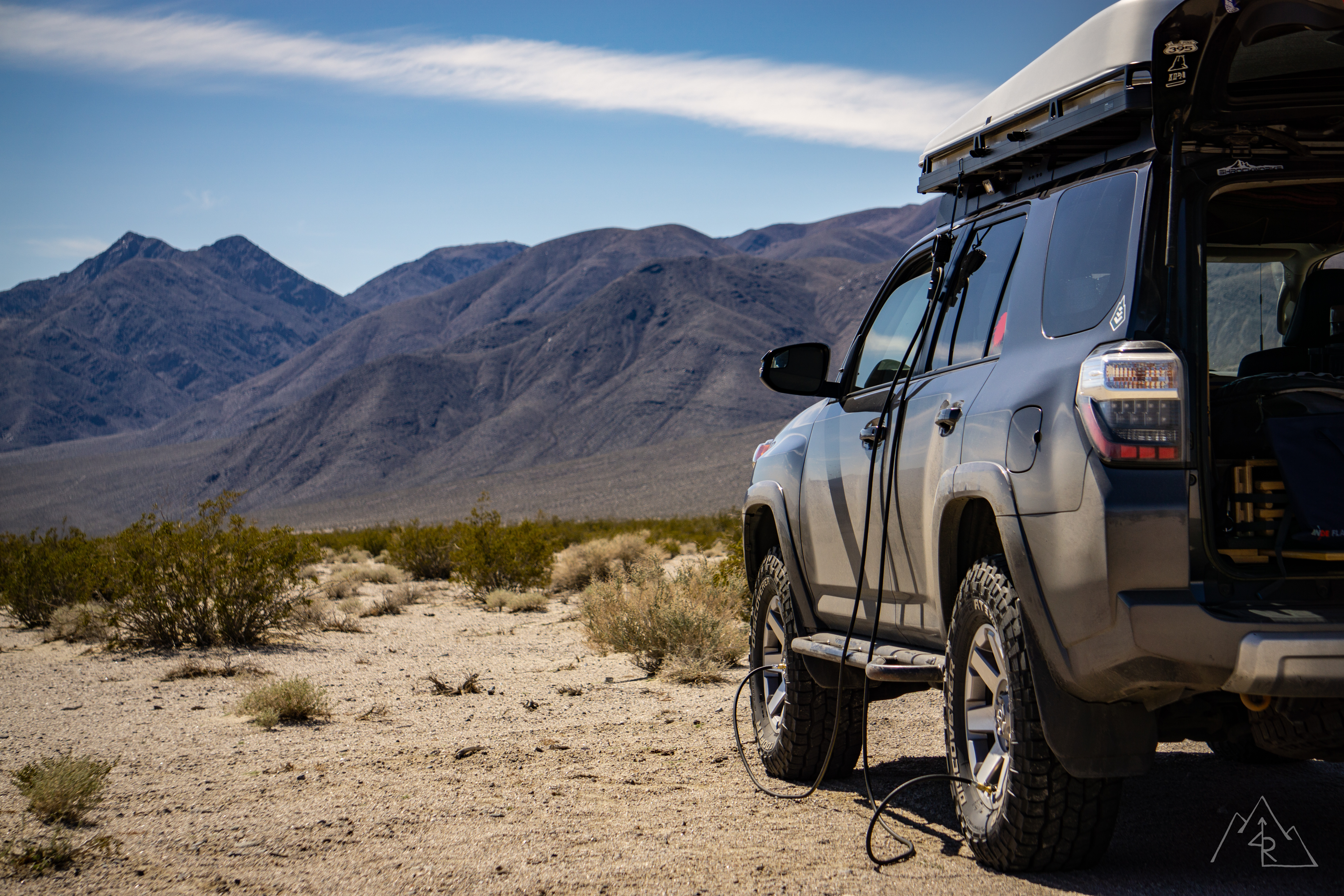
The formula is simple: air down when the pavement ends. This step is crucial to a successful adventure and can be the deciding factor in whether or not you’ll drive through or be stopped on the trail.
A lower tire pressure helps maintain the trail and your vehicle by absorbing bumps/washboards that would normally rattle you to death.
Something equally as important to airing down is getting back to highway pressure when it’s time to head back home. This improves vehicle handling/safety and reduces wear on your expensive tires.
Specs:
- Carrying case: Yes
- Number of tires at once: 2
- Connectors: Brass, locking
- Hoses: Rubber
- Gauge included: Yes, built in
- Inflation port: Schrader valve, air chuck included
- Deflation port: Custom sliding valve
- Main body material: Machined aluminum
- Hanging hook: Yes
- Produced in: South Africa
Table Of Contents
Overview
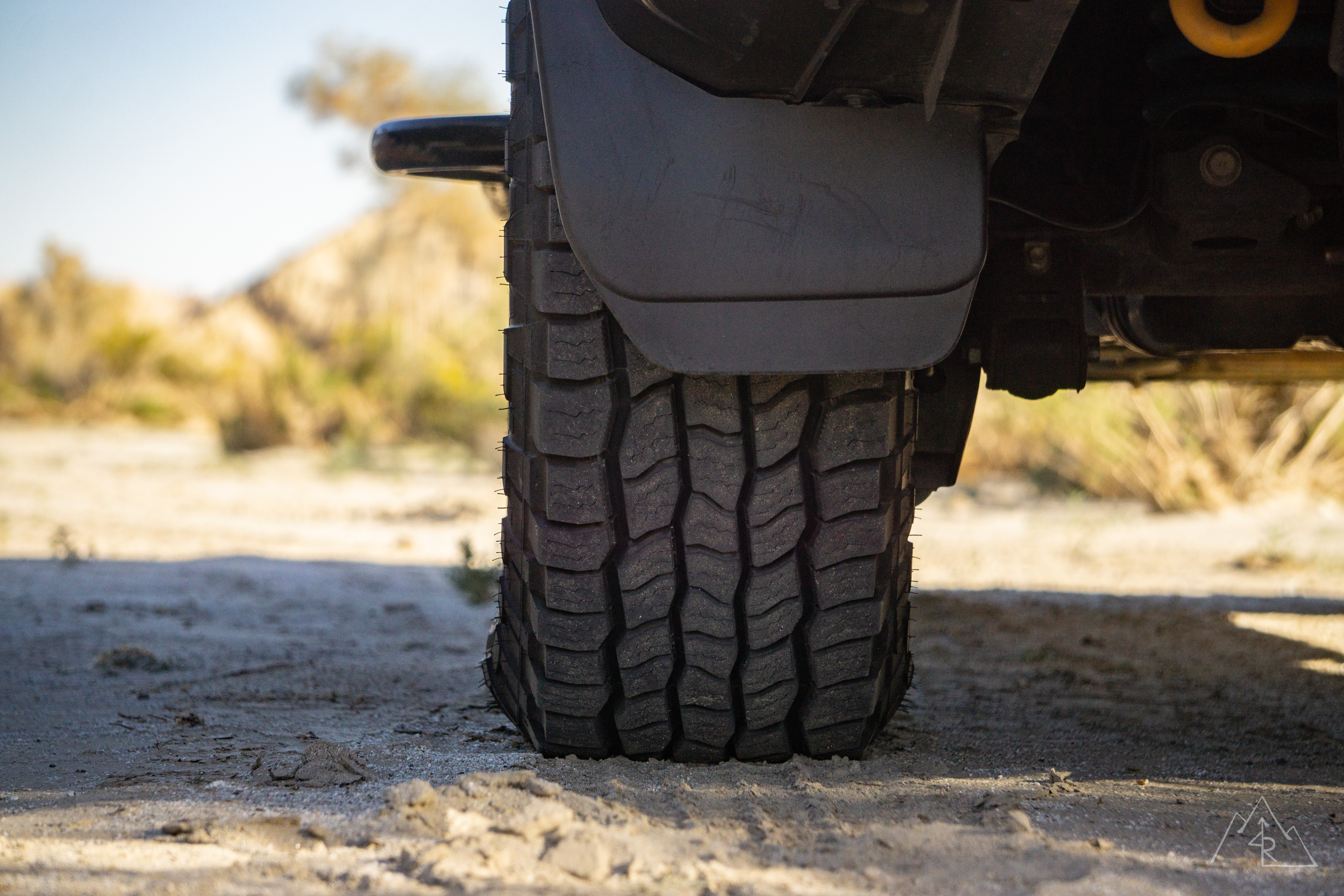
What’s Included
- One Indeflate unit
- One canvas carrying bag with handles
- One hanging hook for the valve body
- One heavy-duty locking brass air chuck
The air up/down ritual has a home with every off-roading enthusiast and like any ritual everyone has their own method.
My method started with using any stick I could find to air my tires down and then, at the end of my trip, going to the closest gas station with a compressor to inflate them back to road pressure.
I evolved and upgraded to a rapid deflator and an onboard air compressor to speed things up and allow me to be self-sufficient when a gas station wasn’t around. This combination has been one of my best upgrades with the 4Runner because I use it every trip, and it just works.
About 6 months ago, when (according to social media) airing up and down became more of a status symbol with the introduction of complex manifolds and built-in air systems that are capable of airing up and deflating four tires at the same time.

I believe these systems are far too complex and limiting for what they can offer, and initially, I had no real interest. However, the theory of airing up and deflating more than one tire simultaneously has some benefits, which kept me looking at new products hitting the market.
Time savings by reducing time “at the tire,” balanced pressures between tires on the same axle, and less fuss getting the job done. For those reasons, I always looked for the right product that would check the right boxes and not make a simple task more complex.
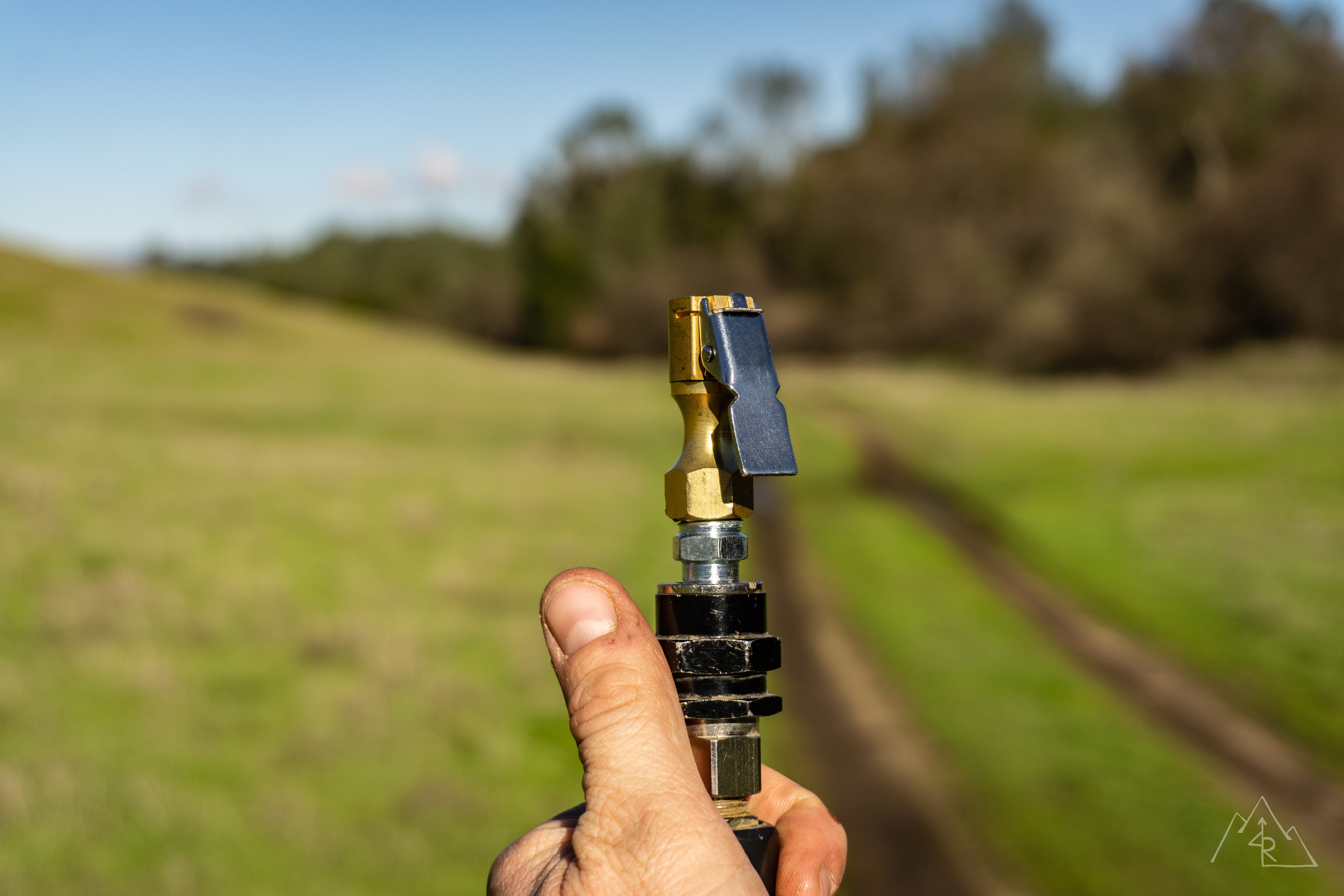
When I first saw Indeflate’s two tire inflation/deflation products and watched reviews on them from other parts of the world, they seemed to check boxes and keep things easy. I decided to try one out, and after getting my hands on one, I can attest that boxes have been checked. I am happy to report that Indeflate has taken something that “just works” to another level.
Deflating
In a side by side comparison, the ARB E-Z Deflator took two of my 285/70R17 Cooper Tires from 40 to 18 psi in 3 minutes 23 seconds.
The ARB removes the valve core from the stem to release as much air as possible. While effective, it takes time to screw on, unscrew the core, deflate, secure the core, and unscrew the deflator.
While it may dump air faster, it offers no real advantage over the Indeflate. Furthermore, when conditions are bad (especially cold or muddy), using the E-Z deflator can be miserable because it is not easy to use with gloves on, and you have to kneel next to the tire the whole time.
This means when it’s cold out, you’re cold.
The Indeflate clocked a time of 3 minutes and 29 seconds during the same 40 to 18 psi test, which was only 6 seconds slower than the ARB. But the biggest difference with the Indeflate is how you spend those 3 minutes and 29 seconds.
Because it doesn’t remove the cores from the stem, the time spent “at the tire” minimizes hands-free time. Clip on the heavy-duty brass connectors to two tires, hang the main unit, slide open the patented dump valve, and deflate.
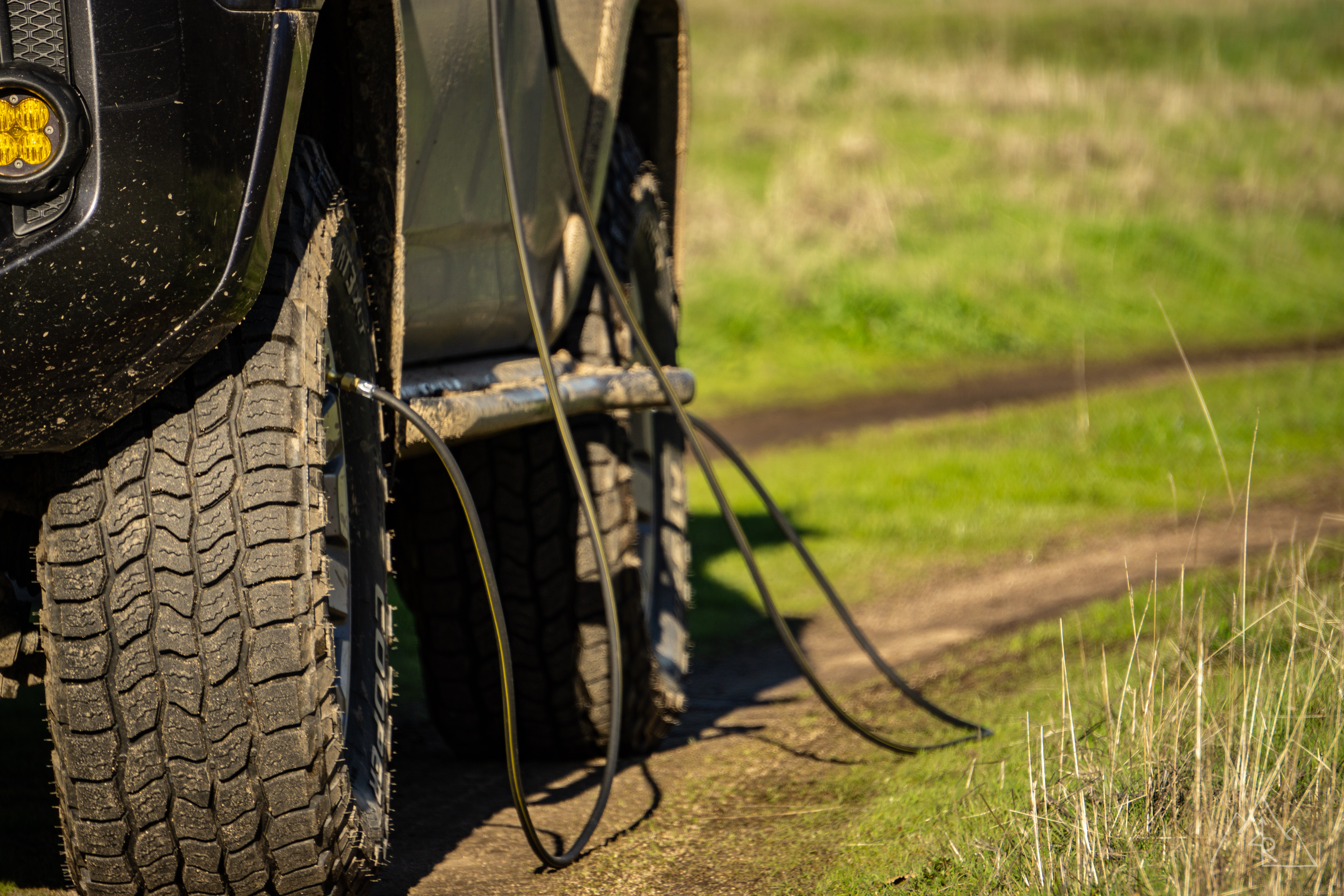
You now have 3 minutes to secure the vehicle for off-road travel, change your HAM antennas, or do one last vehicle inspection. I find this extra time very valuable when I am about to hit the dirt, time that I didn’t have before with the ARB.
Also, unlike the ARB, the Indeflate can be used with gloves in cold conditions and doesn’t require you to kneel next to each wheel when deflating, making it much easier to use in harsh conditions. Slide the dump valve back to the closed position to verify tire pressure, and you’re back on the trail.
Inflating
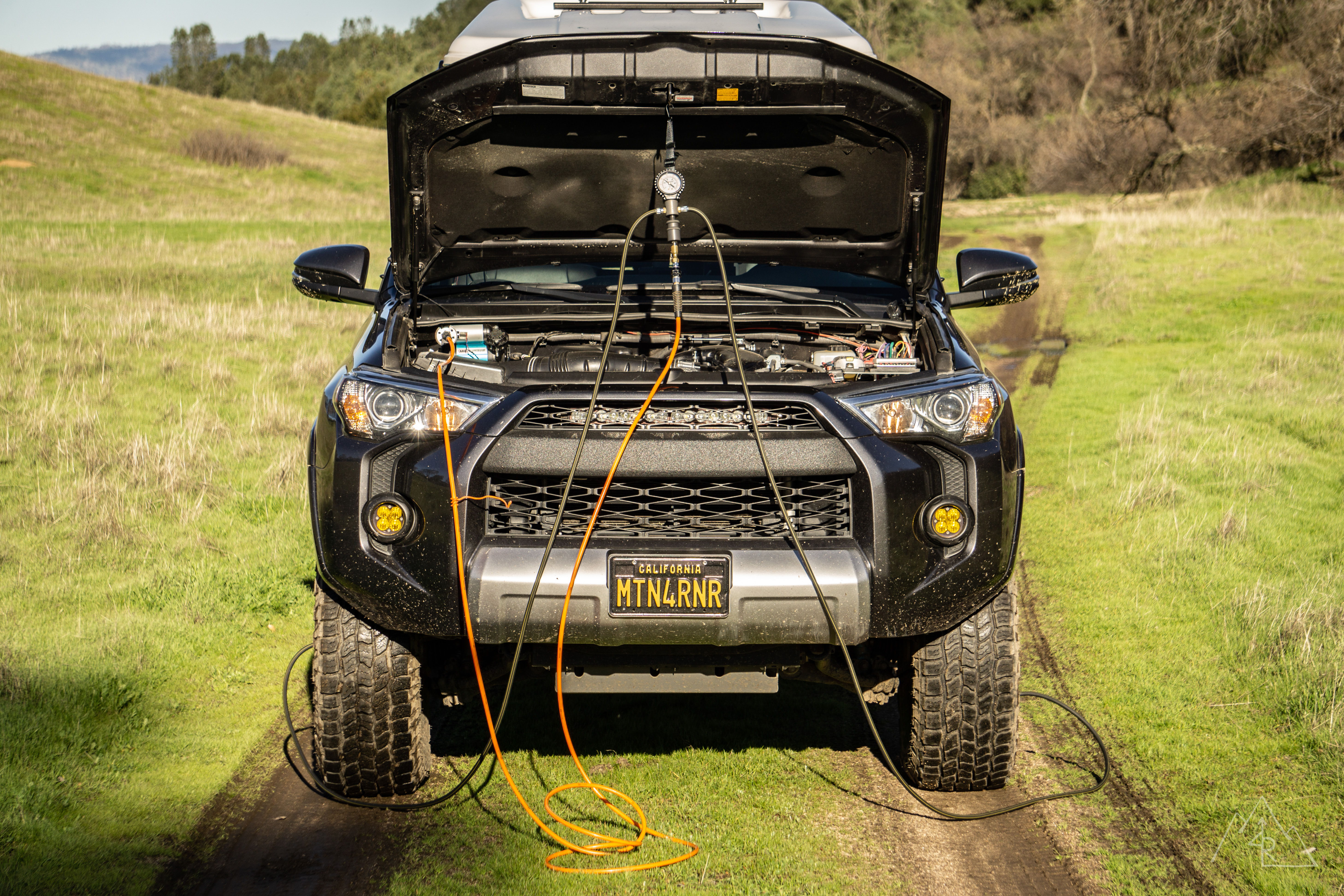
With on-board air available, I used to inflate my tires one by one using a single hose and a hand gauge to check pressures. It’s an entry level setup, but it works.
I had a pretty good system down where I could inflate for about 2 minutes before I would start checking pressure. Then it was a game of inflate, check, inflate, check, too high, deflate, check… An involved process for a simple task.
Using the ARB CKMA12 (single piston) and my basic air setup, I was able to inflate two tires from 18 to 40 psi in 7 minutes and 15 seconds.
I knew that compared to the Indeflate, any gained time would be due to less time spent at the tire monitoring pressure because the air compressor is the same for both setups.
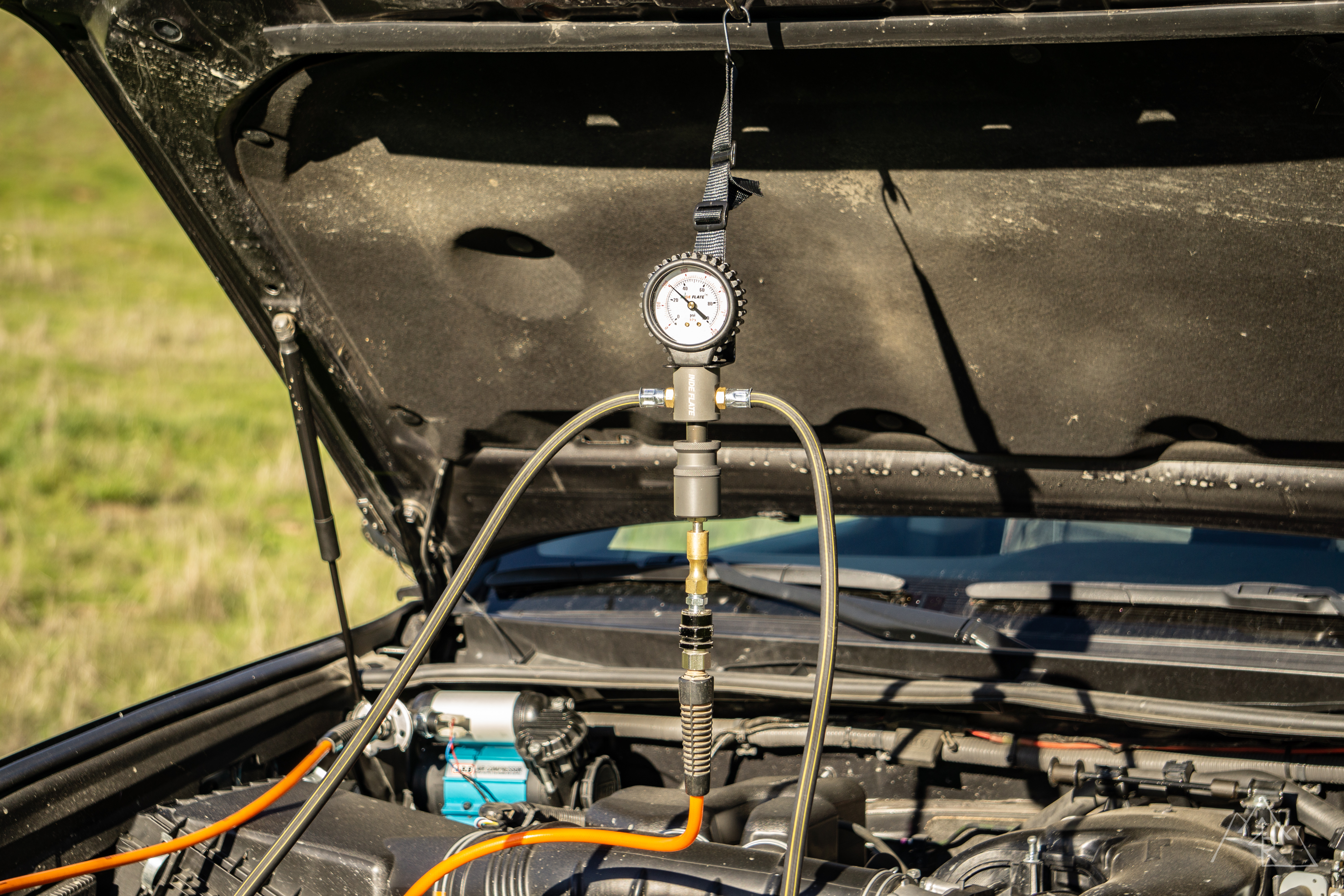
The Indeflate requires a hose from the compressor to inflate, but comes with an air chuck featuring the same heavy-duty brass connector to connect to the Schrader valve at the bottom of the unit.
When I tested the Indeflate, it exceeded my expectations by inflating the same two tires in 6 minutes and 50 seconds. That’s almost a half-minute faster than the tire-by-tire method, but it’s not the whole story on time savings. In those nearly 7 minutes, I only monitored the pressure passively by looking at the gauge when I walked by.
I would then spend that extra time checking my 4Runner’s suspension and inspecting the tires for any damage I may have received on the trail. With the Inflate, I had time to do other things while my compressor did its work—about 12 minutes worth of time when inflating all four tires.
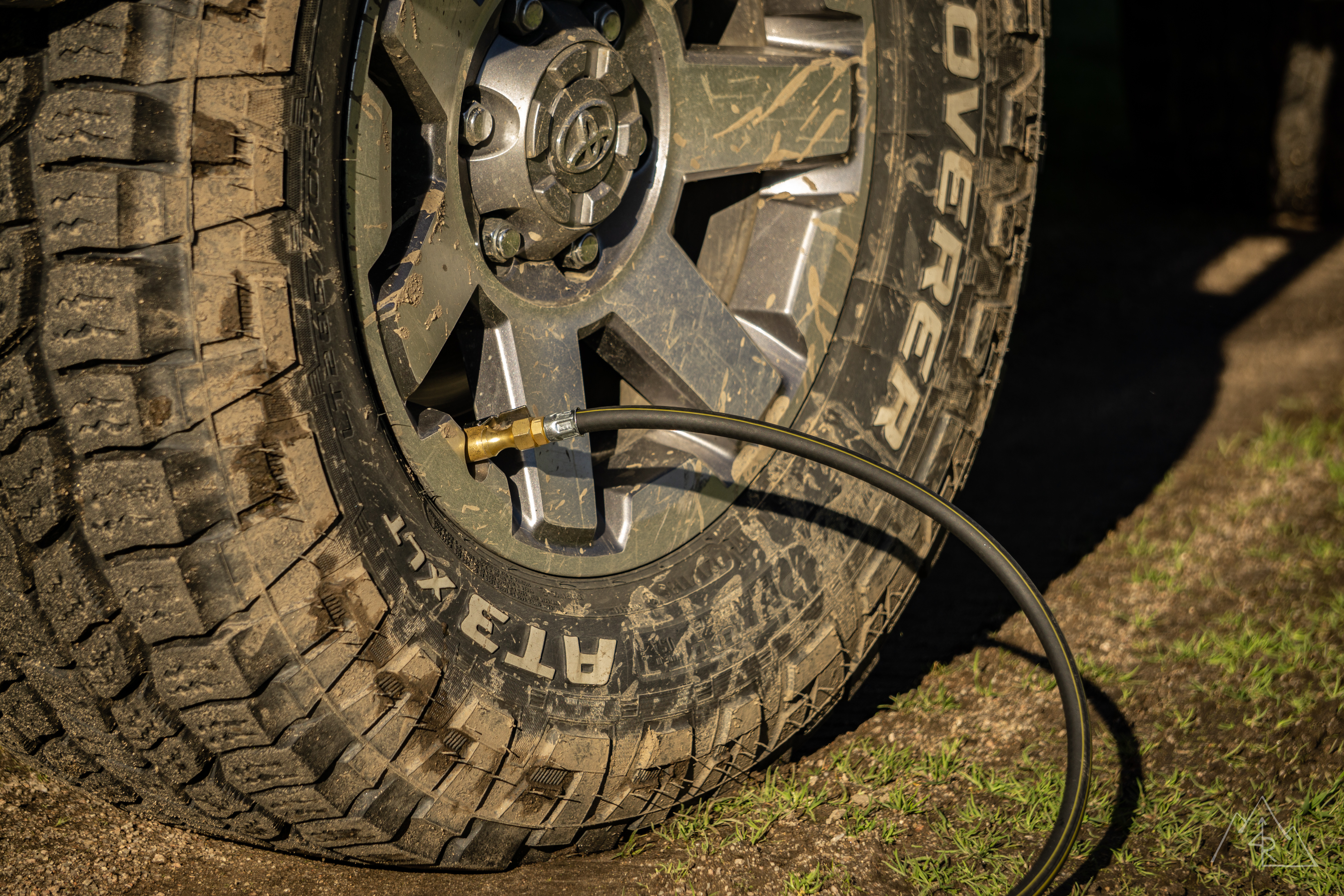
It’s a huge value when my schedule is typically behind due to my not wanting to leave camp and head home. Every minute counts, and the time saved by inflating more than one tire simultaneously with the Indeflate was invaluable.
One thing to note was that under pressure the Indeflate’s gauge registers about 2 psi higher than when it’s disconnected from the supply line. And if you over-inflate the tires, you can quickly slide the dump valve open to hone in your desired pressure.
What else does it do?
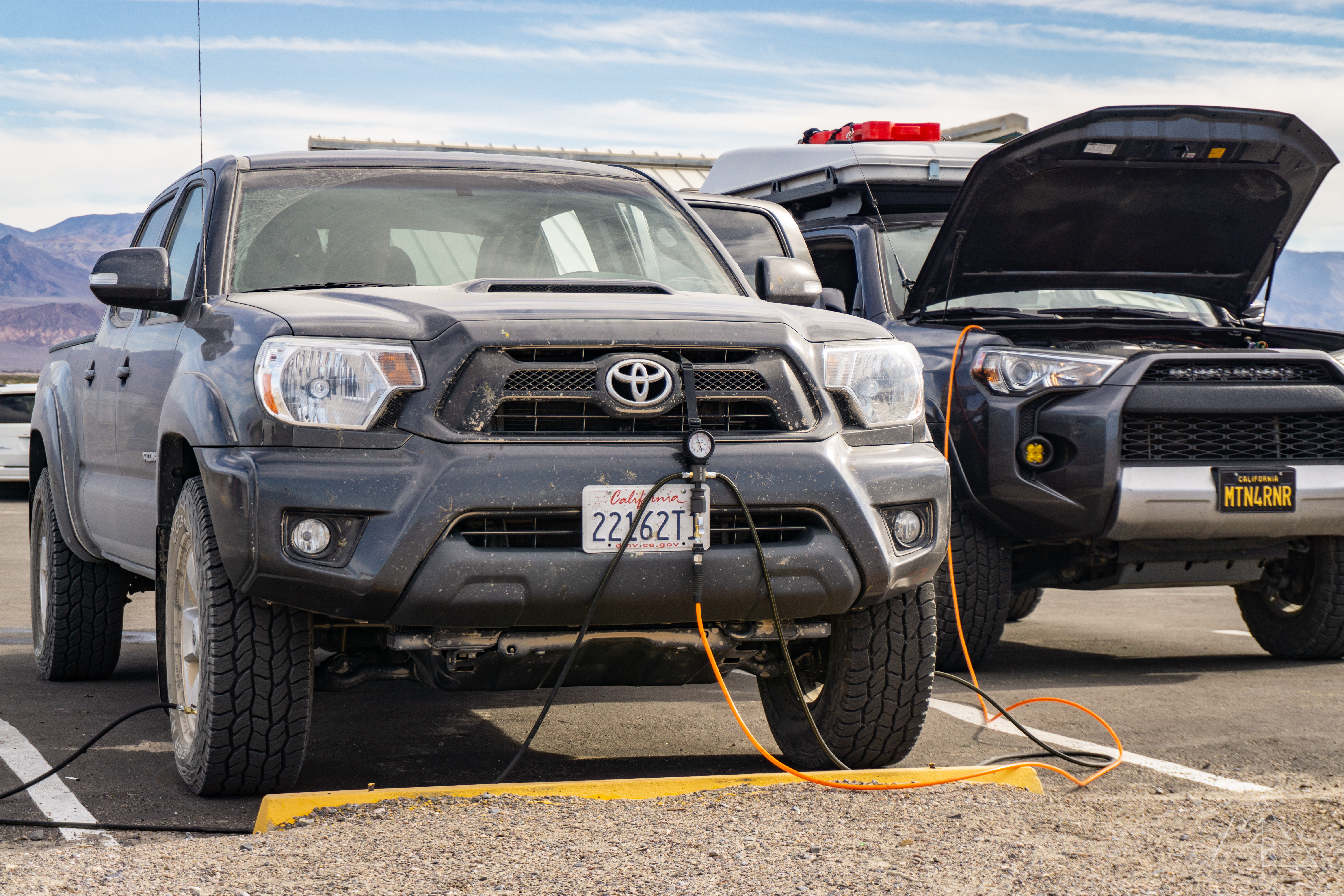
As a product of its design, the Indeflate is capable of a few more tricks. Because it equalizes pressures between two tires, it can transfer air from one with higher pressure to one with lower pressure until they match.
How is that beneficial?
It allows you the ability to “air up” a tire without a compressor by using the other tires and the spare as reservoirs.
It seems like a good option to have if your compressor decides to stop functioning on a trip. It might just be the product that saves you from calling a tow or spending time swapping out for a spare tire.
Another function is using it on any vehicle or object with tires. Unlike built-in air units that are installed directly on the vehicle, the Indeflate can be used in multiple vehicles or trailers and can be easily used to air up your buddy’s rig after you’re done inflating yours.
This added feature makes the investment more versatile because it’s not vehicle-specific and works with any compressor or pump equipped with a Schrader connector.
Trail Impressions
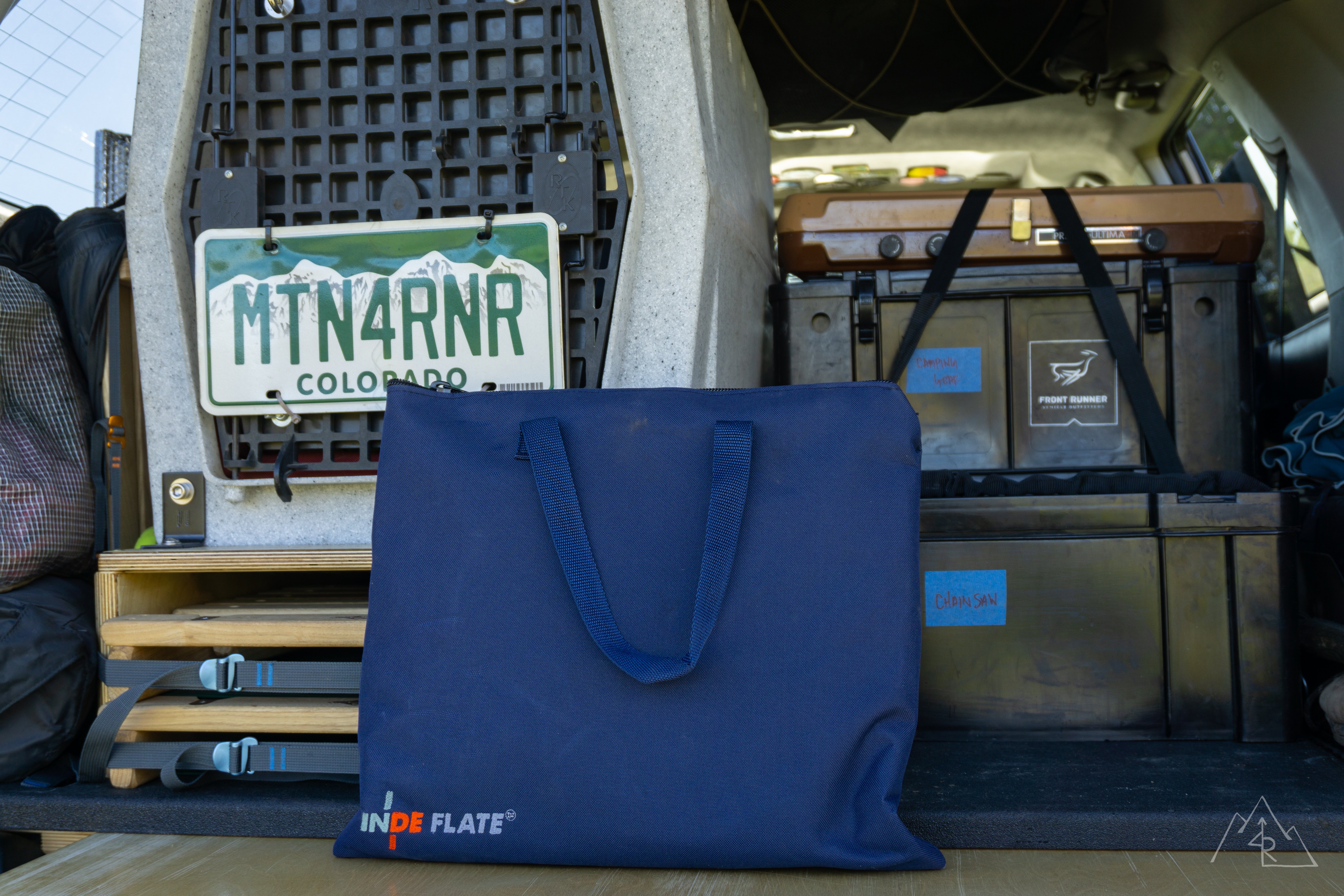
The bag that comes with the kit is stout, well-made with heavy-duty fabric and a zipper. Best of all, it fits my supply hose, pressure gauge, and the Indeflate with room to spare.
How often do you come across a product that provides a high-quality carrier for its product? This shows how much Indeflate values its product and customers.
My only wish is that there were some form of an internal pocket to hold smaller items closer to the bag’s opening, such as the brass air chuck that comes with the Indeflate.
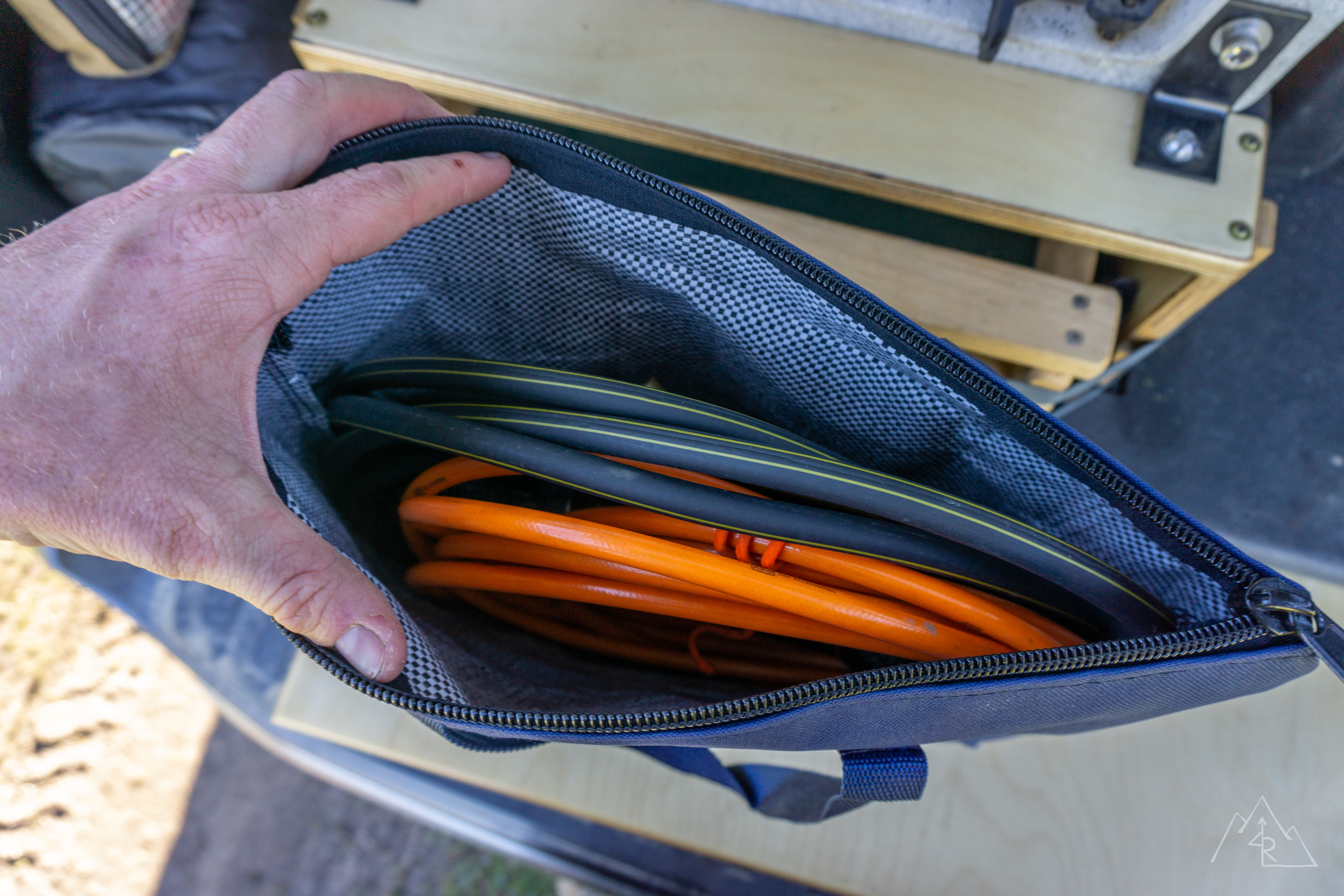
I have been using the Indeflate for the last month or so on a couple of trips that require tire pressure adjustments.
I have found that adding the Indeflate to the 4Runner has been beneficial and a huge improvement over my “it just works” setup because of the time savings and ease of use.
It makes changing pressures much more convenient, especially when you alternate between dirt and pavement on longer trips. The brass connectors are consistent and straightforward to use.
The two 10-foot hoses are made of heavy-duty rubber and are hard to tangle. The main unit’s function is refined thanks to its CNC-machined aluminum body. It’s a winning combination.
Final Thoughts
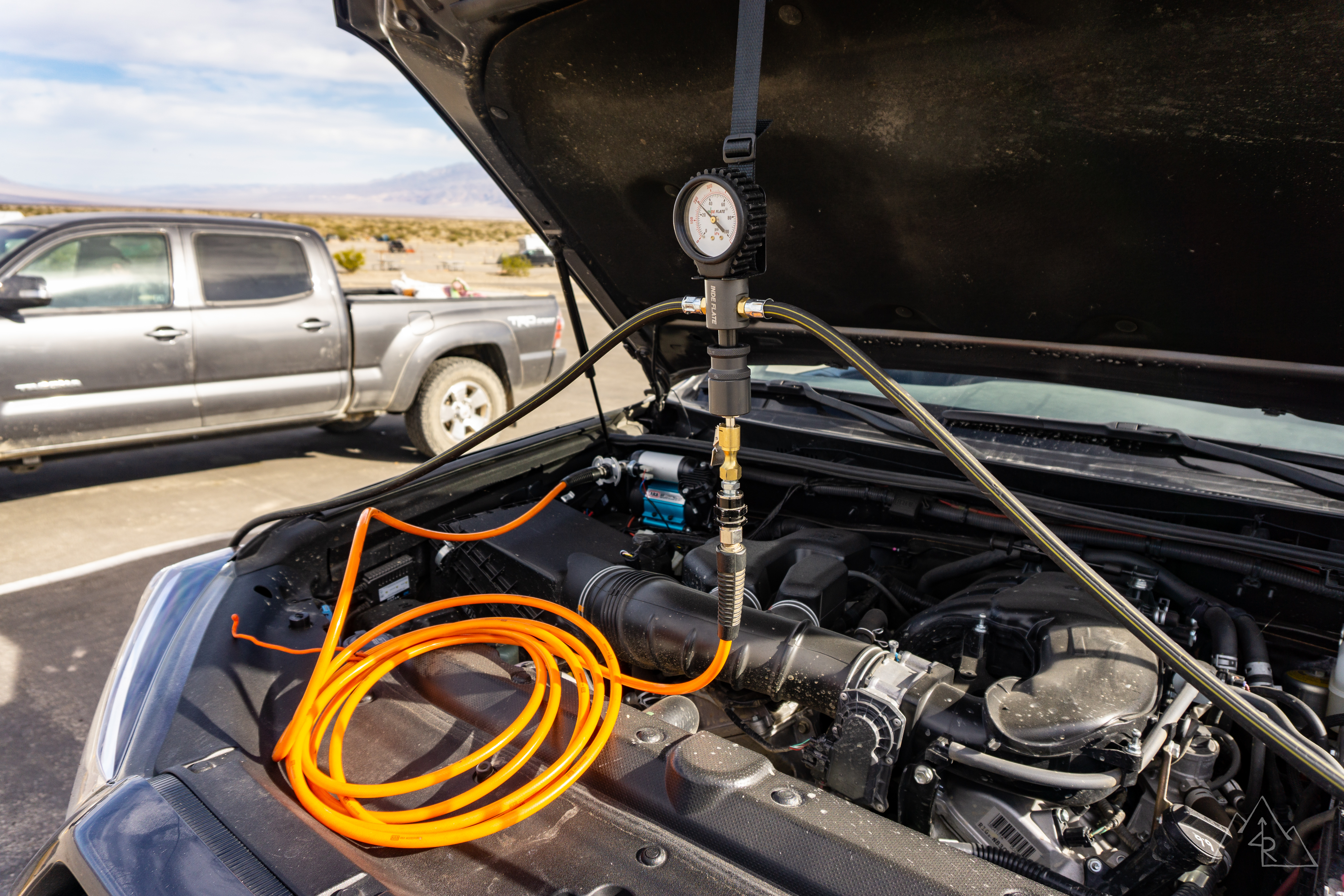
Had this product and a review of it been available when I took that first jump to upgrade my air system, I would have invested in it from the beginning.
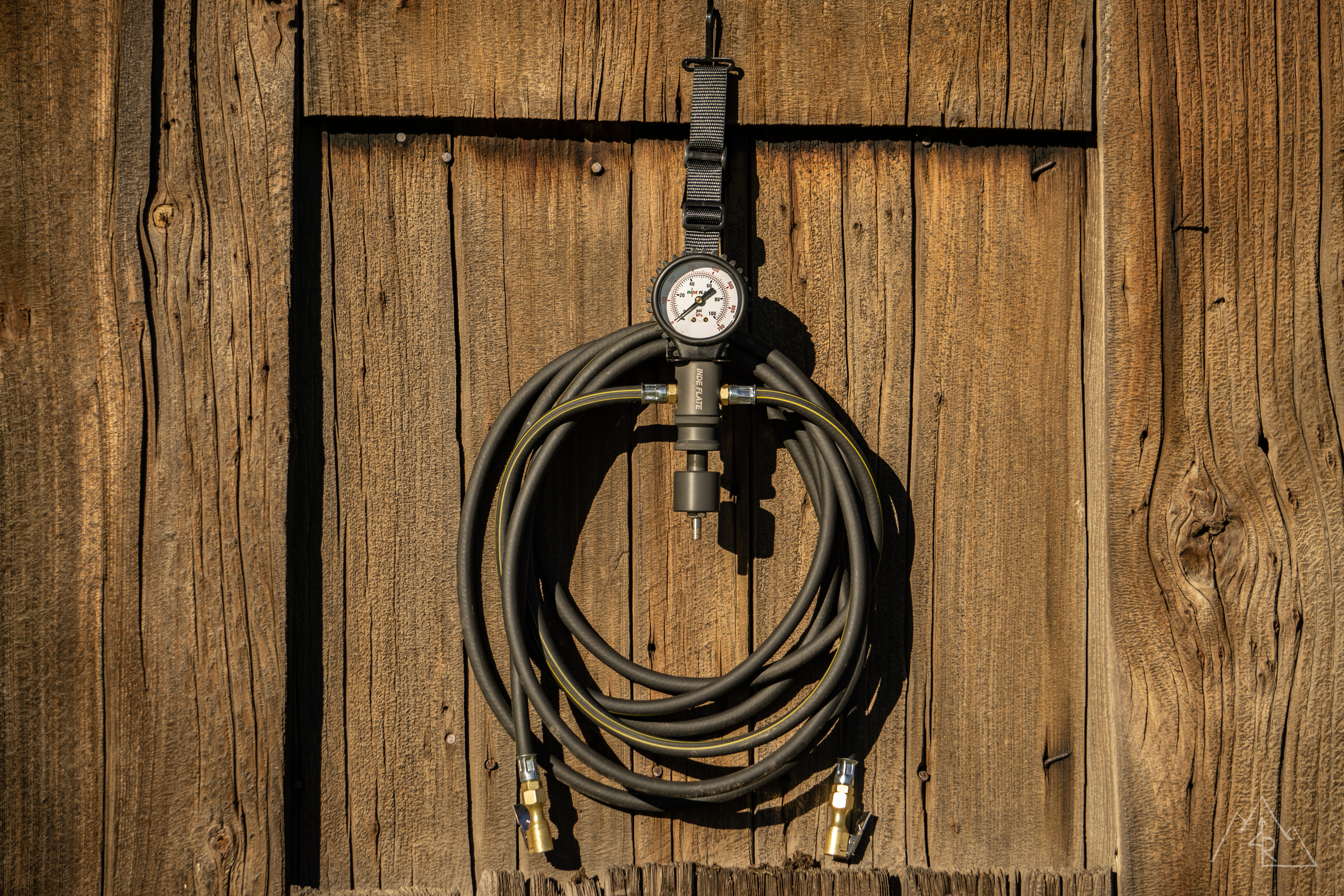
It’s not every day that a new product comes on the market that makes a simple process markedly better. This is one of those products, and it’s going to be in my 4Runner for many seasons to come.


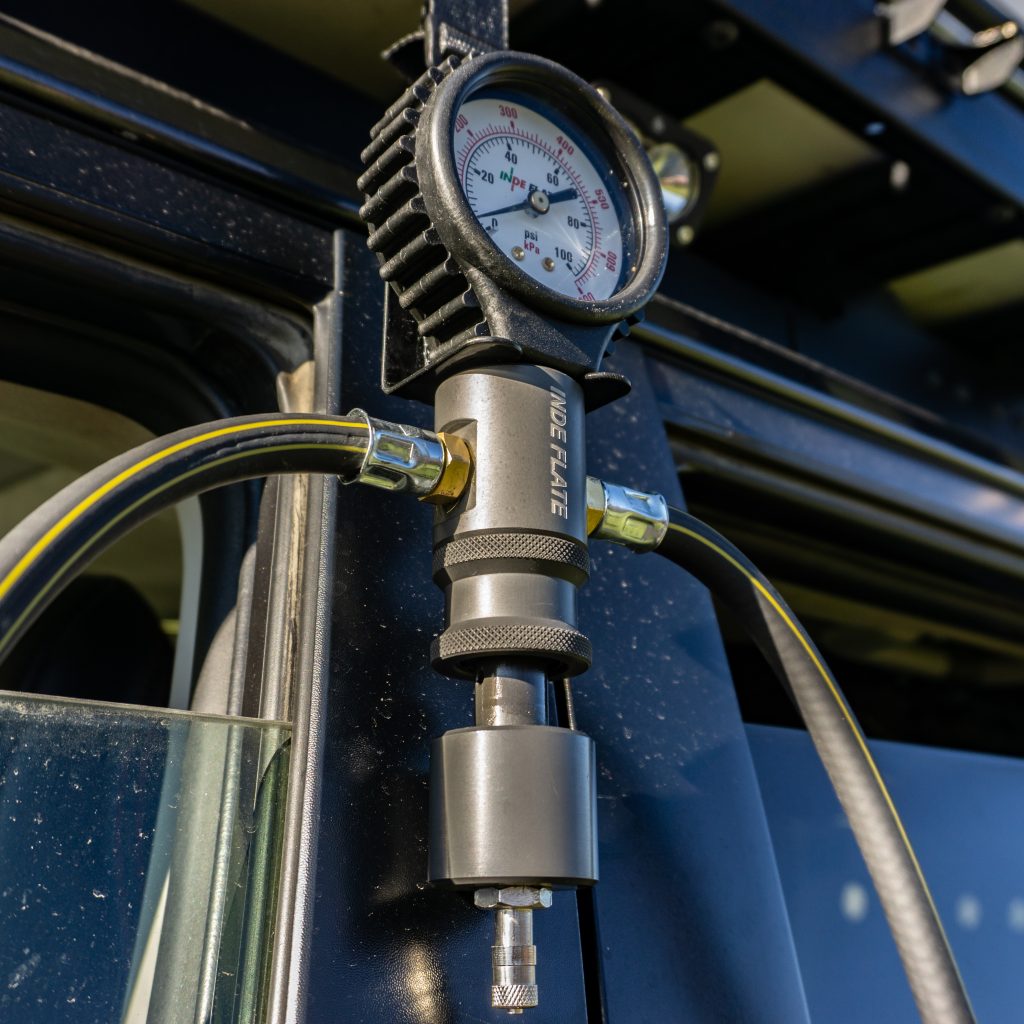
What hose fitting did u use for the compressor to the indeflate? I have a viair 88p and has the tire attachment female end to directly inflate the tires.
As Gary mentioned, your female schrader valve filler should fit direct on the Indeflate. Otherwise, the supplied connector uses a standard quick connect chuck end.
Kinda late on the reply, but I’m pretty sure it’s a common Shrader valve on the Indeflate inlet. The 88p should thread right on to it like it would the tire.